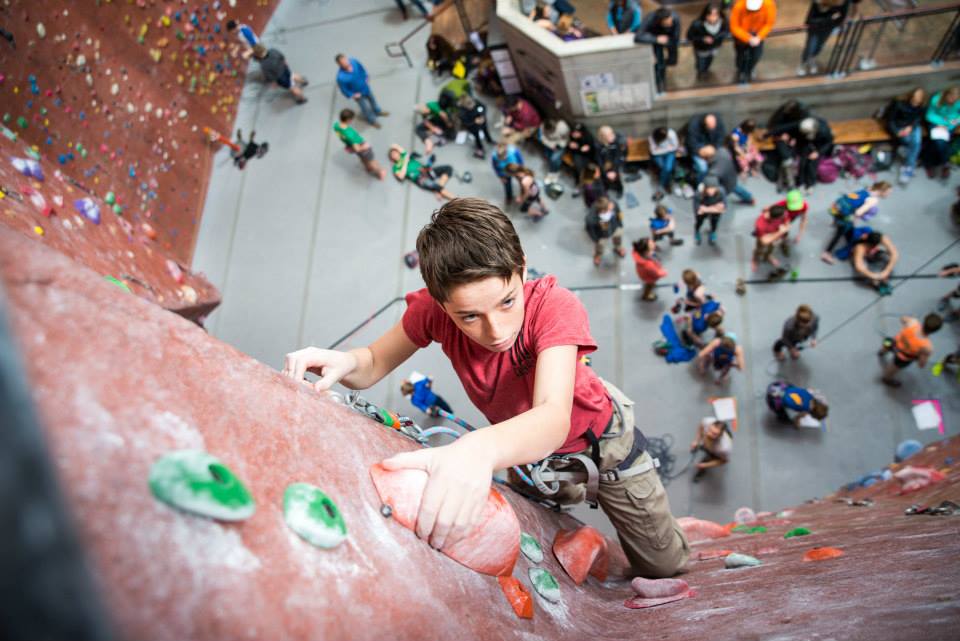
Indoor rock climbing
Rock climbing has changed much since its humble beginnings. With better equipment and more instruction, we are decreasing the dangers of this sport; however, we can eliminate many of these dangers and find other benefits from the sport by rock climbing indoors. I’m not saying outdoor climbing is bad or should not be done. The beauty of nature is a large part of why I enjoy climbing outside; however, its natural unpredictability can many times be climbers’ downfall.
For five years, study of data from climbing gyms across the nation and found that during those five years, only 30 injuries occurred. Most injuries were minor, and none were fatal. A different 14-year-long study tracked rescue missions made for outdoor rock climbing incidents in Boulder County, Colorado. The study found that 428 of the 2,198 rescue missions done over the 14 years were for rock climbing incidents, with 23 of these victims being fatally injured.
Climbing gyms have professionals present to help avoid any setup or technique issue that would cause injury. I believe that by enjoying the sport indoors, where the risk is drastically reduced, you will find more convenient and safe training.
—Tyler Wimmer
Pleasant Grove, Utah
Cursive
Cursive is on its way to extinction. With Common Core in 2009, cursive was no longer required in U.S. elementary schools’ curriculum. Cursive is now seen as the exception rather than the rule, and this does more harm to children than good.
Cursive can help children develop motor skills and improve hand-eye coordination by allowing them to master a skill that takes more refined thinking than print writing. Oftentimes when a child learns cursive, self-confidence and self-discipline emerges, along with increased motivation and a positive attitude.
Cursive can also connect people to the past. Old family documents or historical documents, such as the Declaration of Independence, are all written in cursive, and these won’t be appreciated as much if a person can’t read them. Everyone should be able to read and write in cursive not only because is it beautiful and promotes creativity, but also because it helps the learning process and gives people confidence in writing a signature or writing quickly.
Cursive can provide children many opportunities and benefits that will improve their lives. Cursive should never have been questioned for the benefits children can receive from the timeless, beautiful, lost art that it is.
—Shannan Cambron
Boise, Idaho
Listening to music while studying
Have you ever read a book in the library and your brain wandered off thinking about anything but the book in front of you? Now you have to go back and reread the past couple pages because you were thinking about your crush not responding to your text.
Doing homework in silence allows your mind to go on mental tangents, which causes inefficient studying. Our world is as loud as a baby’s wail with car horns, ambulance alarms and people communicating. We are prone to having sound in the background of everyday life. Just imagine going through a day in silence — it is impossible. Doing homework while listening to music helps you focus and can improve your brain.
—Shankarrav John Vamanrav
Long Beach, California
Bilingualism
Is knowing English enough? Every country in the European Union requires its students to learn another language. Bilingualism gives students an academic and professional advantage. Studies have shown bilingual students outperform monolinguals in their native tongue. Bilingualism creates job opportunities unavailable to monolinguals and also positively effects the brain, allowing better adaptation to new environments.
Statistics show that more of the world’s population today is bilingual than monolingual. About 65 percent of BYU students speak a second language. Think of the impact we could have on our future posterity if we shared our language capabilities with our children.
I have felt the negative effects of being monolingual. Melissa Dalton-Bradford, author of “Global Mom,” said, “You can get by without learning the language, but you can’t get in.” I get by with English, but the limitations of being monolingual make foreign connections impossible: to get in, the answer is bilingualism. It helps people communicate and connect with cultures. If we don’t know a second language, are we learning one? If we do know a second language, are we teaching it to our children?
—Rachel Bangerter
Centerville, Utah




